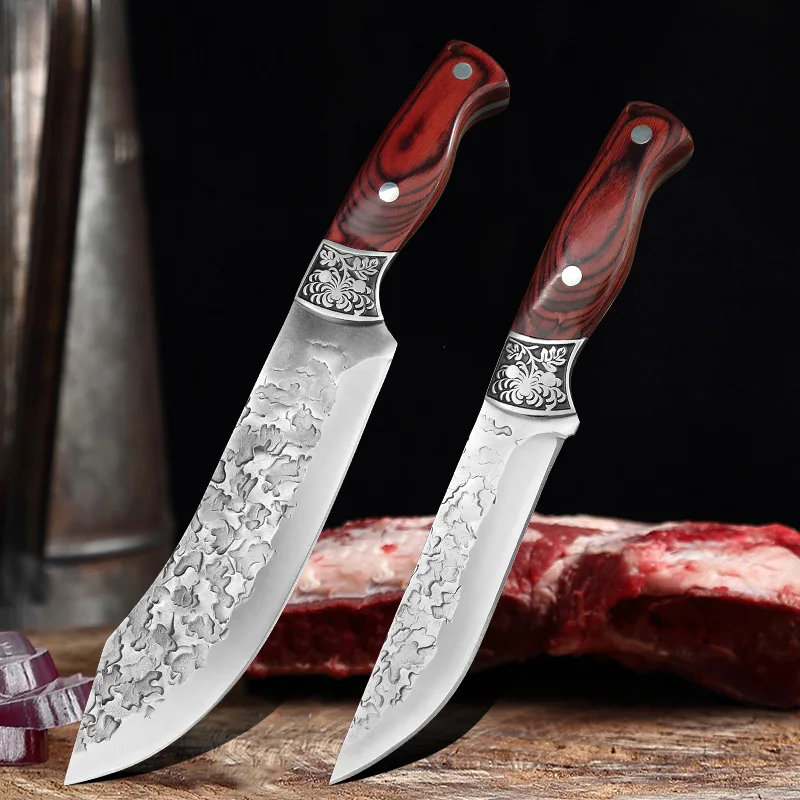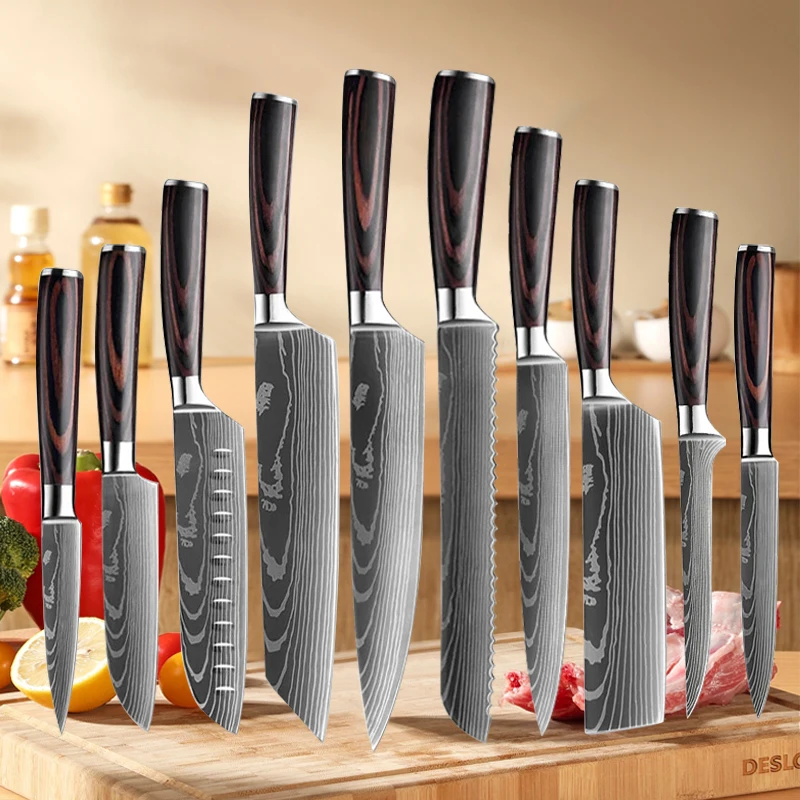Understanding the Utility Knife’s Distinct Features
When scouting for the best kitchen utility knife, it’s critical to recognize its unique attributes. A utility knife, often seen as an indispensable tool in the kitchen, bridges the gap between a chef’s knife and a paring knife. The standard utility knife boasts a blade length that typically ranges between 4 to 7 inches. This size makes it immensely versatile for handling a variety of tasks without the bulk of a chef’s knife or the limitations of a paring knife.
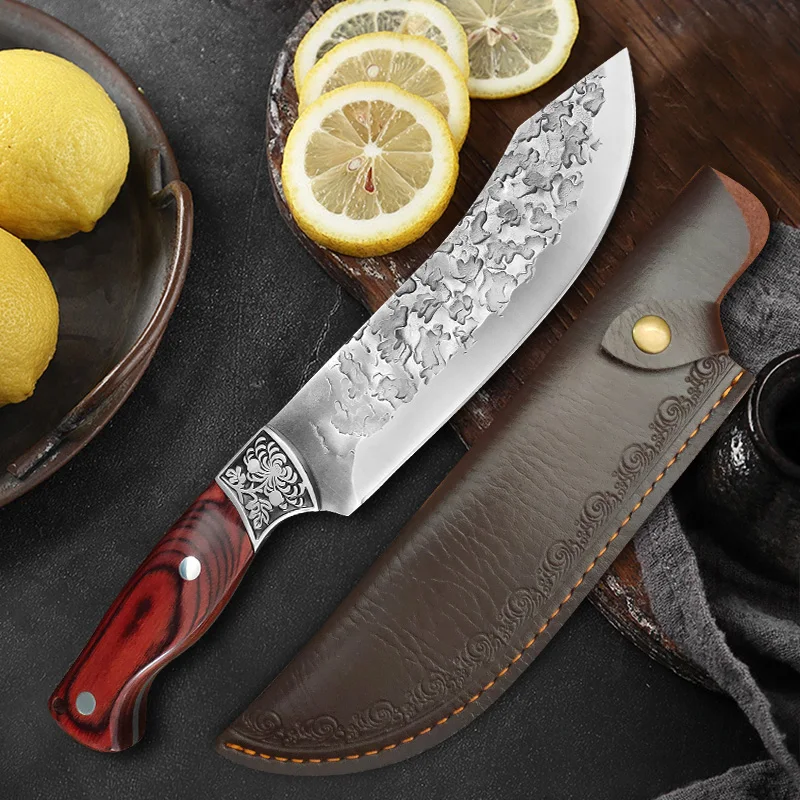
Key features of a utility knife include a sharp, straight-edge blade that’s ideal for precise cuts. Additionally, the slim profile allows for agility in performing tasks such as slicing through sandwiches or trimming vegetables with finesse. For those who engage in occasional intricate work but also require efficiency in everyday kitchen tasks, a utility knife is the go-to tool.
Furthermore, a utility knife’s handle plays a significant role in the overall cutting experience. A well-designed handle should ensure comfort and control, minimizing hand fatigue during extended use. The balance of a utility knife, which is determined by how the weight is distributed between the blade and the handle, contributes to the ease of use and precision in cutting.
Lastly, the utility knife isn’t limited to a single type of material or design. Blades can be crafted from a range of materials such as stainless steel, carbon steel, or even ceramics, each offering different levels of sharpness and durability. Choices range from stamped blades, which are lighter and usually more affordable, to forged blades that present heft and balance, often at a higher price point.
In conclusion, understanding the distinct features of a utility knife can lead to a more informed decision when choosing the perfect tool to complement your kitchen cutlery. It’s a blend of functionality and practicality, ensuring that whether you’re slicing a tomato or carving a chicken breast, you have the right knife for the job.
Top Utility Knife Choices for Home Chefs
Finding the ideal utility knife is pivotal for efficient, effortless meal prep. Here’s a curated list of top-notch utility knives that cater to various needs and budgets.
Mac MTH-80: The All-Around Performer
The Mac MTH-80 stands out with its super-sharp edge and comfy handle. Perfect for speedy dicing and smooth slicing, it’s praised for its durability and balanced feel.
Tojiro F-808: Affordable Japanese Precision
Tojiro F-808 offers Japanese craftsmanship at a fair price. It’s incredibly sharp and great for precise cuts. However, it requires a little more care, especially with tough foods.
W黶thof Classic Ikon 8″ Chef?s Knife: The German Powerhouse
This knife’s heft makes it ideal for heavy-duty tasks. Its sturdiness and sharpness make it a favorite for those who prefer a weightier knife.
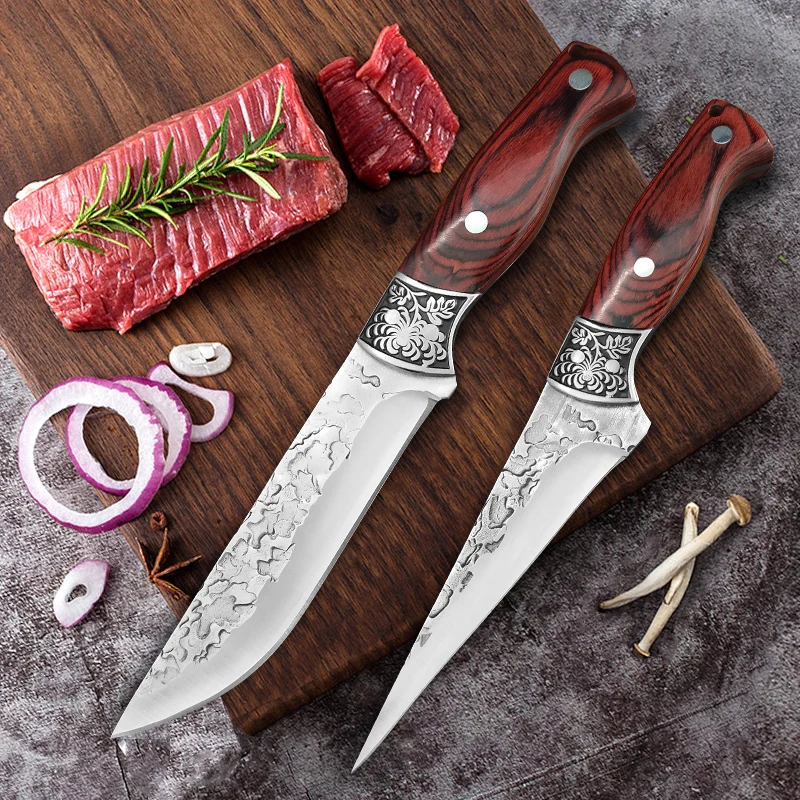
Victorinox Swiss Classic Chef?s Knife: Budget-Friendly Excellence
For a sharp and durable option that won’t break the bank, the Victorinox Swiss Classic shines. It’s user-friendly and robust, excellent for beginners or budget-minded cooks.
The Versatile Uses of a Utility Knife in Daily Meal Prep
The best kitchen utility knife is a daily workhorse, offering unmatched versatility for your meal prep routines. It performs a range of tasks, simplifying kitchen work and supporting your culinary creativity. Here are the prime uses of a utility knife:
- Slicing: Its blade is perfect for cleanly cutting sandwiches, as well as slicing fruits, veggies, and cooked meats without squashing them.
- Trimming: The precise edge trims excess fat from meats and tidies up loose vegetable peels.
- Chopping: For quick chopping tasks, the utility knife handles herbs, shallots, and onions with great control.
- Detail work: It has the agility for scoring breads, segmenting citrus fruits, or creating delicate garnishes.
- Filleting: The utility knife is also adept at filleting fish, offering the right mix of precision and flexibility.
The utility knife’s adaptability makes it ideal for both planned meals and last-minute preparations. It’s an essential tool for anyone who values efficiency and versatility in the kitchen.
Selecting the Right Utility Knife for Your Needs
Choosing the perfect utility knife involves several key considerations. Focus on blade length, sharpness, handle comfort, knife balance, and ease of maintenance to find a knife that suits your specific cooking style and requirements. Incorporating these factors will lead to an enjoyable culinary experience.
Blade Length and Sharpness
The blade length affects the knife’s utility. Typically, a 4 to 7-inch blade can handle multiple tasks effectively. Look for a knife that offers a sharp edge to ensure precise cuts and ease of use. A sharp blade also reduces the amount of effort needed during cutting and decreases the risk of accidents.
Handle Comfort and Knife Balance
A comfortable handle makes a significant difference, particularly during long cooking sessions. The knife should feel like an extension of your hand, with a balanced distribution of weight that enhances control and maneuverability. The right balance contributes to effortless chopping and slicing.
Maintenance and Care for Longevity
Proper maintenance extends the life of your utility knife. Opt for knives that are easy to clean and maintain their sharpness. Regularly hone the blade to keep it in peak condition. Choose a utility knife made from durable materials that can withstand frequent use and sharpening.
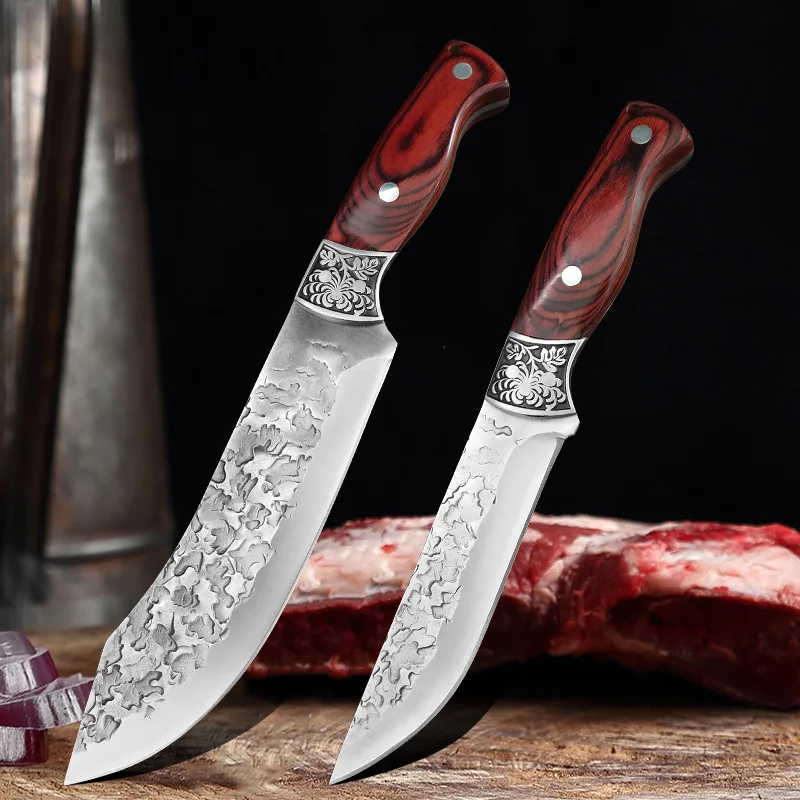
When these factors are considered, you’ll be well-equipped to select a utility knife that will serve as a valuable tool in your kitchen for years to come.
The Unparalleled Benefits of a Petty Knife in Your Kitchen Arsenal
A petty knife, often overlooked, is a versatile culinary tool perfect for delicate tasks. Smaller than a chef’s knife yet larger than a paring knife, it offers a unique blend of precision and versatility. Typically, petty knives range from 4 to 6 inches in blade length. This size is ideal for jobs that are too small for a chef’s knife but too big for a paring knife.
Precision and Control
The petty knife excels in tasks that require fine motor skills. Its sharp, thin blade is perfect for slicing fruits, mincing herbs, and creating garnishes. Its design allows for intricate cuts and close control, enhancing your culinary precision.
Versatility in the Kitchen
Despite its size, the petty knife is surprisingly versatile. It can handle chopping small vegetables, slicing cheese, and even filleting small fish. Its agility makes it an excellent choice for both quick meals and elaborate preparations.
Ideal for Everyday Tasks
For daily kitchen tasks, a petty knife is extremely useful. It is perfect for tasks like slicing apples, dicing onions, or peeling potatoes. Its manageable size makes it a go-to for everyday cooking needs, offering both efficiency and comfort.
Comfort and Ease of Use
The handle of a petty knife is designed for comfort, reducing hand fatigue during prolonged use. This makes it a favorite for both professional chefs and home cooks. Its balanced weight distribution enhances handling ease, making each cut smoother and more controlled.
In summary, incorporating a petty knife into your kitchen arsenal can revolutionize your meal prep and improve your cooking efficiency. Its unique size and sharpness make it an invaluable tool for a wide range of culinary tasks.
Expert Recommendations and Tips on Choosing Kitchen Knives
Choosing the right kitchen knife involves more than just the price. Here are expert tips to help you select the best blade for your needs:
Understand Your Cooking Style
Before choosing a knife, think about what you cook most often. Different styles suit different tasks. If you chop lots of vegetables, a chef’s knife might be best.
Consider the Blade Material
Knives can be made from various materials. Stainless steel is durable and easy to maintain. Carbon steel stays sharper longer but requires more care.
Test the Handle Comfort
A comfortable handle is crucial. It should feel secure and natural in your hand, making cooking easier and safer.
Set a Budget
Decide how much you want to spend. Higher-priced knives often offer better quality and durability but there are good options at every price point.
Read Reviews and Get Recommendations
Check out reviews and ask for recommendations. Experienced cooks can provide insights on the longevity and performance of different knife brands.
Don’t Overlook Balance
A well-balanced knife reduces fatigue and gives you better control. Make sure the weight feels evenly distributed when you hold it.
By following these tips, you will find a knife that suits your kitchen tasks and lasts a long time.
Knife Care 101: Maintaining Your Investment
Taking care of your kitchen knives ensures they stay sharp, durable, and safe. Here’s how to maintain and protect your culinary investment.
Regular Honing
Keep blades in top shape with regular honing. Quick passes with a honing steel realigns edges before each use.
Proper Washing
After use, wash knives by hand with mild soap and warm water. Dry them immediately to prevent rust or stains.
Safe Storage
Store knives in a block, on a magnetic strip, or with blade guards. This protects the edges and prevents accidents.
Avoid Hard Surfaces
Cut on wood or plastic boards only. Avoid glass or stone surfaces that can dull or damage the blade.
Sharpening When Needed
Professionally sharpen knives when they no longer cut effectively. Annual sharpening is often enough for home chefs.
Mind the Handle
Check handles for wear. Tighten any loose rivets or screws to ensure the knife’s handle stays secure.
Use as Intended
Use knives for their intended purpose. Don’t use them to pry open containers or cut non-food items.
By following these care tips, your best kitchen utility knife will remain a reliable tool for many meals to come.
